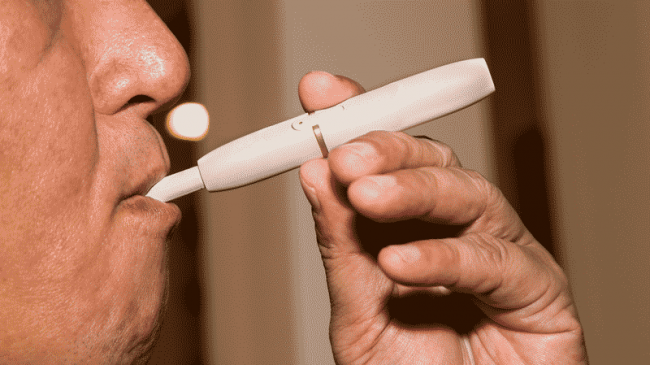“A smoke-free future is one where we think we are able as the industry to play our role and offer products that are a better choice for smokers.” Those are the words of Tony Snyder, vice president of communications at the tobacco giant Philip Morris International (PMI), speaking to Bloomberg.
One could be forgiven for reacting to this statement with skepticism. Why is a tobacco industry employee talking about a smoke-free future?
The answer isn’t as absurd as you might think. It lies in a host of new devices being developed and sold by the world’s biggest tobacco companies, known as “heat-not-burn” (HNB).
Most people are by now familiar with e-cigarettes and smokeless tobacco, which allow smokers to continue using nicotine but without the deadly smoke which is responsible for the deaths of half of all lifelong smokers.
It has long been known but tragically under-explained, that it is the smoke that comes from lighting a cigarette that causes smoking related diseases, not nicotine. As the late great tobacco researcher Professor Christopher Russell put it, “people smoke for nicotine but they die from the tar.”
These new HNB products, unlike e-cigarettes, use traditional leaf tobacco but instead of burning it, they heat it, producing an inhalable tobacco flavored vapor. This gives the user a taste and experience closer to smoking than other products currently on the market. Crucially, by heating rather than burning the tobacco the levels of harmful chemicals are dramatically reduced.
According to the Food and Drug Administration, there are 18 harmful and potentially harmful constituents (HPHC) whose concentrations are critical to evaluating the safety of any tobacco product. Research from PMI Science shows levels of these HPHC’s in their HNB product IQOS are reduced by an impressive 90 percent compared to a traditional cigarette.
The potential for reducing smoking related harms HNB presents lies not just in the reduced levels of harmful chemicals, but also the type of smoker they appeal to. HNB products could prove highly effective among smokers who still desire the taste and ritual of smoking but have failed to quit using traditional nicotine replacement therapy or going cold turkey. For these people, nothing has worked and many have resigned themselves to smoking for the rest of their lives.
This is not simply a theoretical prospect either. In Japan, where IQOS has been on the market for a little over a year, it accounts for 10 percent of the Japanese cigarette market and 72 percent of those who switched to IQOS has done so exclusively, quitting regular cigarettes. Similar conversion rates have been achieved Swiss, Italian, Portuguese, Ukrainian, Romanian and Russian cities where IQOS is available.
But the biggest question on people’s minds when it comes to these products is undoubtedly the health claims made on their behalf. Can tobacco companies really be trusted when they say they’re selling a product safer than cigarettes?
Few will blame the public or policy makers for being wary of the scientific claims of Big Tobacco given their record. The spectacle of Big Tobacco executives telling Congress they believe nicotine is not addictive is burned into the American psyche.
But things have come a long way since the days of the Tobacco Institute. Tobacco companies are making their data on HNB products publicly available and are urging scientists to scrutinize their research and conduct their own independent studies. Dr. Konstantinos Farsalinos a cardiologist and one of the world’s leading experts on e-cigarettes has done just that.
Presenting his findings at a conference in Warsaw, Farsalinos confirmed HNB is significantly less dangerous than cigarettes, with most of the harmful toxins found in cigarettes slashed by 90 percent or more.
PMI has spent $3 billion developing its IQOS technology and is serious about it going global. British American Tobacco and Japan Tobacco International have the same idea, leading to a dizzying arms race between tobacco companies to produce safer products that can help smokers switch and avoid an early grave.
Other nations are already taking the lead in welcoming new products that could get smokers to switch. The United Kingdom’s Department of Health recently released their tobacco control strategy for England, where they welcome the prospect of new products.
“There has been the development and very recent introduction of novel tobacco products that claim to reduce the harm of smoking,” the document reads. “We welcome innovation that will reduce the harms caused by smoking and will evaluate whether products such as novel tobacco products have a role to play in reducing the risk of harm to smokers.”
None of these new HNB products are on the market in the U.S. but that could change should the FDA approve a premarket tobacco application for PMI’s IQOS product.
If helping people quit smoking is a public health goal, then it is an imperative that policy makers and regulators make it as easy as possible for smokers to quit and that includes allowing innovative products like HNB to come to market.
When examining these products regulators should be clear that they are significantly less harmful than cigarettes and have huge potential to allow people to make the switch away from smoking. It would be a perverse outcome if the U.S. continued to allow deadly cigarettes to be sold but refused to allow products that are 90 percent safer and could help millions quit smoking for good.

